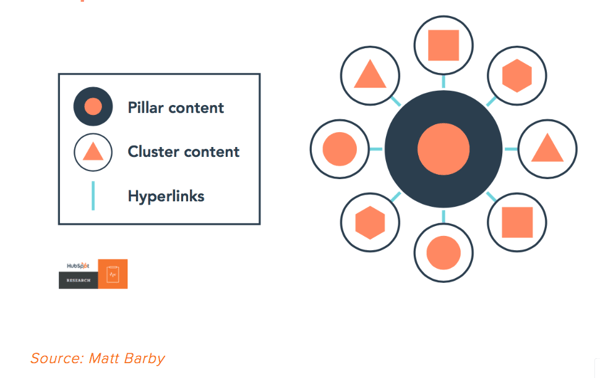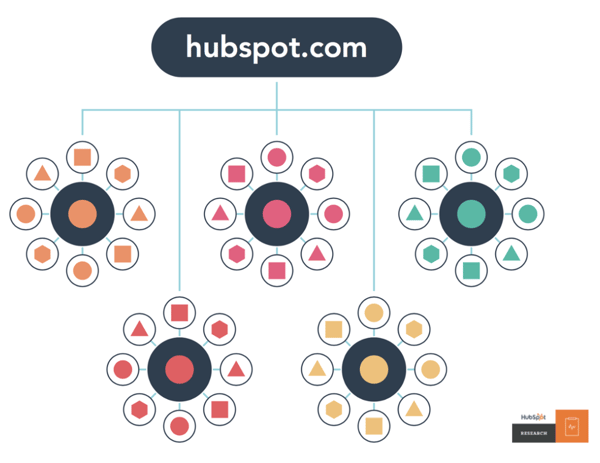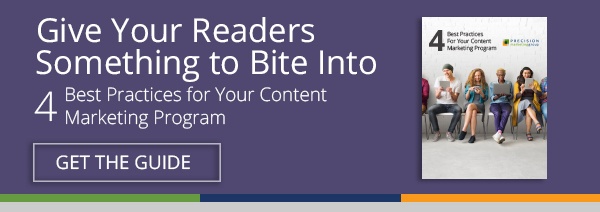SEO best practices change all the time. But for years, marketers have optimized pages in the same way:
- Research non-branded keywords and phrases your prospects are using to search for a solution like yours.
- Create a page or post optimized for each priority keyword.
- Insert this keyword into all five on-page optimization areas – The URL, page title, H1 tag, body content, and image alt text.
Then, you would promote your page and cross your fingers that Google would crawl your content soon. Sometimes your content would rank. Sometimes it wouldn’t.
Now I’m here to tell you: Forget everything you’ve ever learned about on-page SEO. Because Google is getting smarter than all of us. No seriously. Forget it. This is no longer the best way to write content for your website.
The good news? As Google continues to make changes, there are more opportunities for you to rank for related search queries without having to create a page simply to capture a keyword.
The bad news? Your 2013 keyword-rich post will not rank well if the content isn’t helpful, insightful, or the smaller piece of a larger puzzle.
Now, if you’re a small- or medium-sized business, you may not have the budget to deal out to an expensive SEO consultant. With that in mind, we’ve put together the practical marketer’s guide to the future of SEO: topic clusters.
What are topic clusters (and why should I care?)
A topic cluster is the strategic organization of your website into a group of related content so that a visitor can easily navigate among related topics to have their search query fully answered.
Takeaway #1: What are the elements of a topic cluster?
- The Pillar Content Piece: Pillar content exists at the center of your topic cluster, representing the hub of your theme or “topic” to which other pieces of related content are connected. Your pillar content should provide a high-level overview of your entire topic. For example, if your topic cluster is about dogs, your pillar will likely include abridged sections about the evolution of dogs, the different types of breeds, obedience training styles, diet tips, and where to adopt a dog in your area. It doesn’t need to be a 10,000-word research document, but it should supply enough valuable information and substance to leave a curious reader with a well-rounded understanding of your topic.
- Supporting Cluster Content: Cluster content is in-depth, insightful, and comprehensive coverage of high-level topics you mention in the pillar content piece. For example, a cluster content piece may be an infographic of the history of dog evolution from the first recorded dog in history to today. Each of the high-level topics in your pillar should eventually have its own thorough piece of cluster content to support the pillar. Cluster content can come in a variety of formats. Not all cluster pieces have to be blog posts. A piece of cluster content could also be an infographic, downloadable content offer, video, webinar or quiz.
- Hyperlinks: Each cluster content piece should link to and from your pillar content piece. The hyperlinks act as spokes on a wheel, helping both search engines and visitors understand that all of these content pieces are related to the theme at the hub. You should also link cluster pieces together whenever it makes sense to do so.
To give you an idea of what this looks like, here is a graphic from HubSpot’s Matt Barby:

Okay, that all sounds well and good. But why does this matter?
Takeaway #2: How are topic clusters important for ranking?
We sometimes forget that Google has a job to do. Google’s primary purpose is to serve visitors answers to their questions. Whether it’s a picture of a unicorn, or a recipe for homemade lasagna, Google’s job is to populate the best answer to a search query within 1-4 search results.
Recent updates to Google’s algorithm show that Google is now able to populate search results based on context rather than content.
For example, your post may rank for “how to choose the best dog breed” even if the keyword “choose the best dog breed” doesn’t appear anywhere in your post. Why? Because people searching for similar search terms may have found the answer they were looking for in your post.
- What does this mean? You can stop incorporating the target keyword into the five common on-page optimization elements. Google is now smarter than that. If they naturally fit into these positions, it's not going to hurt you – but be sure you're not including them for the sake of including them.
- So, how should we write content moving forward? You should stop writing your content for search engines and start thinking critically about how to comprehensively answer the questions your target buyers are asking. Always write for the reader first!
- How do topic clusters help? Because each of your cluster pieces covers a different aspect of your pillar, you are saying to Google: Not only are we experts on this topic or subject, but we have a variety of pieces to support it.
- Why does the hyperlinking structure matter? Linking away from your topic cluster confuses Google. Let’s say you’re a vet clinic writing about dog health. In your post about the best diet for your dog, you link to another article about the best diet for cats. Later in the post, you mention annual checkups, so you link to a piece that talks about cat checkups. In the past, this was a great way to connect your content pieces together. Now, it is a site-ranking nightmare. Google reads that post and says, “Hmm.. Is this post really about dog health? Because there are links here to cat health…” By linking away from your cluster, you are confusing the search engine, and diminishing your authority on your topic.
But more importantly, someone that is searching for dog health tips probably doesn’t care about cat health tips. (Sorry to all the cat lovers out there…) So again, we come back to thinking critically about what our visitors want.
You can better establish your authority on a subject by only linking to content that is related to your topic. However, it's important to recognize that this does include linking to high-quality, relevant third-party content address this topic, as well.
Takeaway #3: How do I organize my website using topic clusters?
In a perfect world, the organization of your website would look something like this:

Right now, your content is likely floating around, linked to everything with a keyword, and not tied to any pillar piece. Don’t panic. Here’s how you can start organizing your website into clusters in stages:
- Export your website content. Using Excel or another organizational tool, export all your website pages into a single workable document.
- Decide on topics. Topics should not be individual keywords. Topics should be a general theme for which you'd like to be known as an expert. Think about how you can bucket content pieces under an umbrella idea. For example, Dog Training may be your pillar piece – with basic obedience, positive reinforcement, corrective techniques, and proper e-collar use as cluster pieces.
- Assign each page to a topic. Once you’ve decided on your topics, assign each page to a topic in your workable document. This will help you identify which pages should link together.
- Create a pillar content piece. Evaluate whether a pillar currently exists for each topic. If not, create one. You'll need a hub in order to make those important connections!
- Hyperlink related content together. Link all your cluster pieces to your pillar content (and try to do so where the anchor text naturally lends itself to it), and link cluster pieces to each other when it makes sense to do so. Remove hyperlinks to content that aren’t related to your cluster, or where the content doesn’t move people down the funnel.
Note: It’s still okay to include a CTA to request a demo, download a piece of related content, or visit your contact page. Just try to be thoughtful about what would best help your visitor. A positive user experience is paramount. - Think strategically about future content. You may identify opportunities to create cluster pieces when there are gaps in your pillar content. From now on, try to create content that reinforces your pillar content theme. And continually update the pillar, too! Google and other search engines favor fresh content.
The ultimate goal of topic clusters is for you to become the authority on a particular topic. A visitor should be able to learn all there is to know about your topic simply by engaging with your pillar content and the hyperlinked cluster pieces.
Takeaway #4: What if you don't have the time or budget for restructuring your website?
We get it – not everyone has the time, energy or resources to tackle an enormous content restructuring project. Here’s what you can do instead:
- Take a break on writing net new content. You’ve probably already got a lot of great content out there. Instead of writing new content each month, reinvest that time in consolidating your content into more helpful pieces. If you have 2+ blog posts about a similar topic, determine which blog is ranking best. Then, combine your related posts into a better, more helpful combination at the highest-ranking post’s URL. Make sure you redirect the older pages to the newly-updated one.
- Review your most successful blog posts. Export your blog posts and choose your top 20-25. Then, try to think critically about what additional questions someone may have when they read the post. For example, after reading about the history of dogs, someone may want to learn more about the different breeds available for adoption. Evaluate what links currently exist in those blogs, and add relevant links where it makes sense. Then, remove links that aren’t related to that topic, or that don’t move people down your funnel.
Wrangling the beast that is search engine optimization may take some time, but given the competitive nature of the online marketing landscape across all industries, it's well worth the effort. Above all else, keep the needs and user preferences of your customers and prospective buyers front and center when optimizing your website.
Need help with completing a website project or developing an SEO-inspired content strategy? Contact our team! We're happy to lend a hand.




